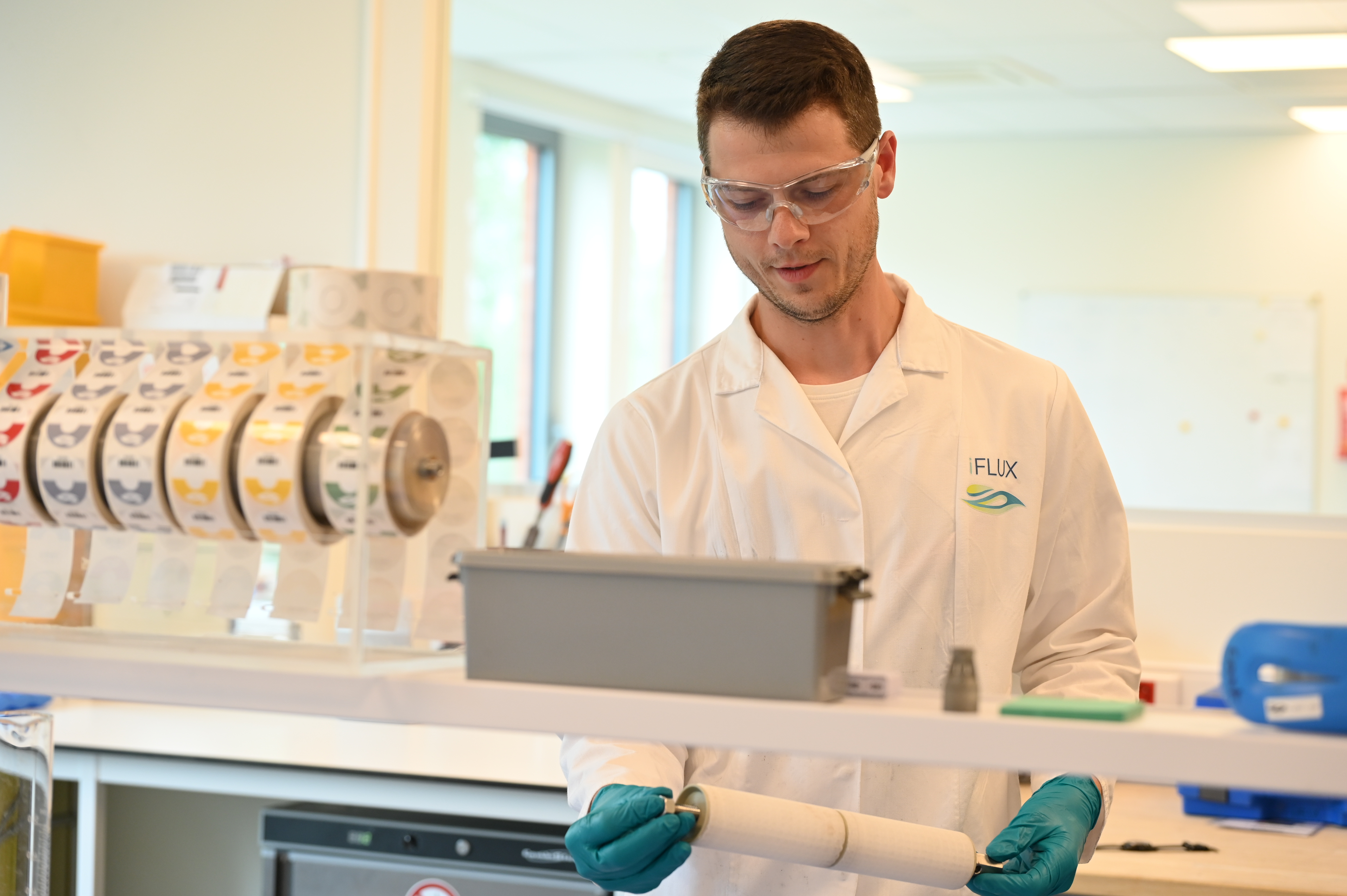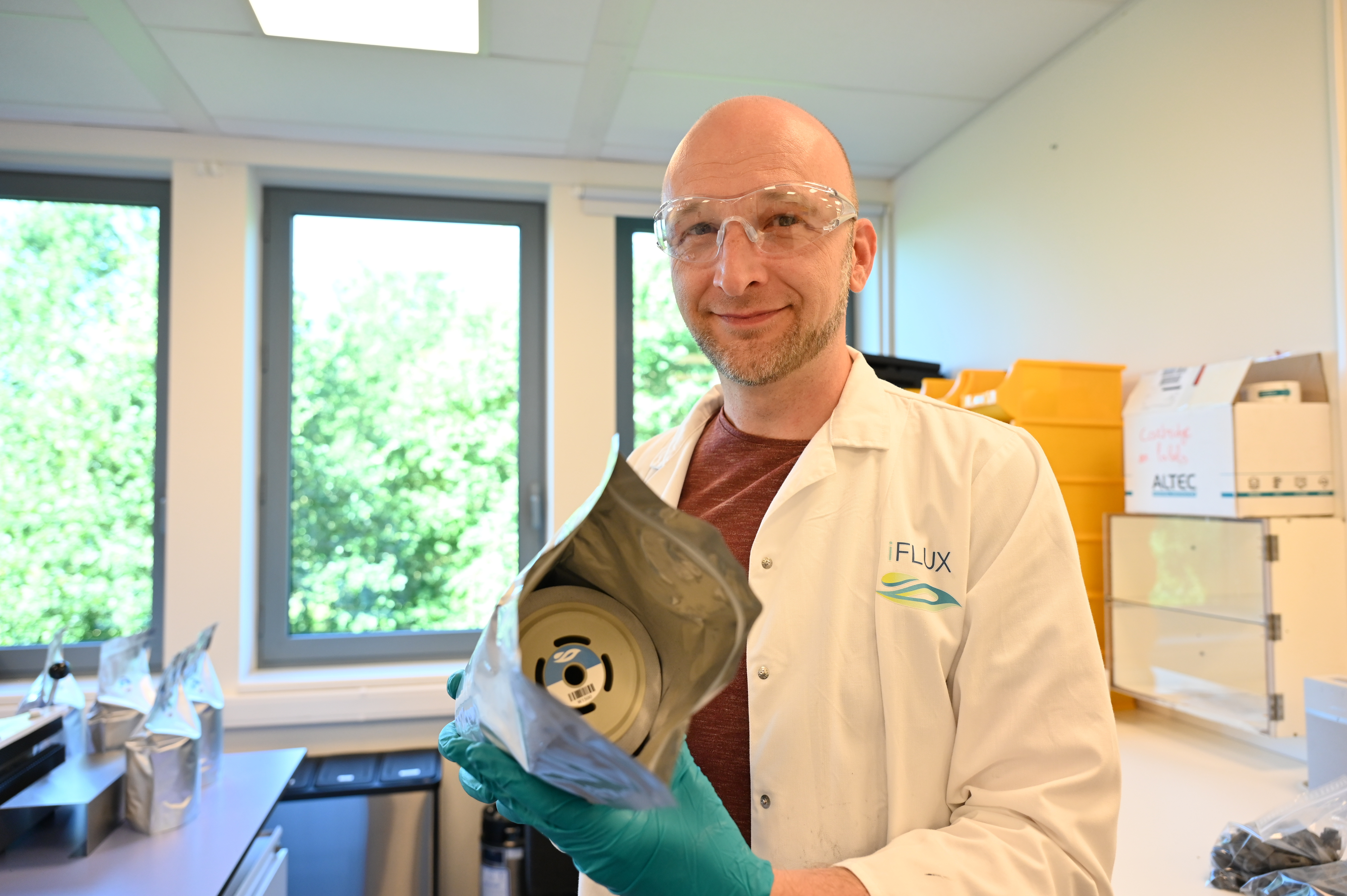Announcement: NEW SIZE Cartridges for measuring groundwater and mass fluxes in smaller monitoring wells
Posted on Tuesday 16 February 2021 We have an exciting announcement to make. Recently, we developed new sizes of cartridges to measure...
3 min read
Ellen Bogaert : Dec 3, 2024 11:03:07 AM

Remediation is extremely costly, so it’s best to do it in a targeted way and get it right the first time. The iFLUX Sampler is a unique tool that accurately monitors groundwater dynamics and contamination. When should you use the iFLUX Sampler? And when not? We spoke with our colleague Erik Bosmans.
Together with colleague Maxim Sysmans, Erik is responsible for monitoring the iFLUX Sampler projects. He joined the iFLUX team exactly six years ago. At that time, he already had many years of experience with leading companies in the sector, such as TAUW and Vinçotte.
"I chose to join iFLUX driven by the belief that accurate measurement leads to better understanding. The traditional method for measuring groundwater contamination relies on concentration measurements. Based on sample collection, remediation experts make the best possible estimation of how a contamination plume spreads through the groundwater. To support this estimate with exact figures, they benefit from an accurate measurement method."
And that’s where the iFLUX Sampler comes in. The technology originates from the doctoral research of groundwater expert Dr. Goedele Verreydt, which led to the founding of iFLUX in 2017.

Flux Measurements
The iFLUX Sampler is a valuable and unique instrument for determining pollution and water fluxes in groundwater. It’s unique because the technology can measure fluxes. A 'pollutant flux' is defined as 'the amount of pollutant, expressed in mass, that flows through a measurement plane per unit of time and per unit of area.'
Put simply: by measuring the fluxes, you know exactly how the pollution moves with the groundwater. Erik: "Flux measurements allow us to better map and even predict groundwater contamination behavior."
Traditional methods for estimating pollutant fluxes rely on measuring concentrations in groundwater. “This approach can both underestimate or overestimate the actual pollutant flux because concentration measurements are snapshots. It’s much more powerful to know how the concentration moves over time and space.”
Thanks to its patented design, the installation of the iFLUX Sampler takes about 10 minutes per location, including the measurement of groundwater levels and the depth of the monitoring well. It typically remains in the monitoring well for several weeks to months before being sent to the laboratory for further analysis.
By working with an average over time, you get a better understanding of what is truly happening underground. By measuring for a longer period, you can better detect pollutants, just like groundwater flow and substance transport, for example. “Remediation is extremely costly, but thanks to the iFLUX Sampler, you can work more precisely because the groundwater dynamics hold no more secrets.”

Heterogeneous Subsoil
At iFLUX, we often use the term passive flux sampling. It’s passive because you don’t actively influence the groundwater to measure. The iFLUX Sampler is very easy to install in existing monitoring wells, where it then measures the natural flow of the water.
Erik: " In heterogeneous soils and complex situations, the application of iFLUX is more than valuable. A soil consists of different layers, each with specific characteristics. The groundwater follows preferential flow paths, which we can map very accurately."

Not only the heterogeneity of the soil layers but also other variables, such as the seasons, major construction projects nearby, dewatering activities, the breakdown of contamination by bacteria, and so on, complicate traditional methods and estimates. The iFLUX Sampler is then the perfect tool to gain better insight and make the right decision.
Are there situations where the iFLUX Sampler might be unnecessary? Erik: "Of course. When the subsoil is homogeneous, it actually does make less sense to use the iFLUX Sampler. In such soil, estimates are often sufficient."
PFAS and More
There are different types of 'cartridges' that can be part of the iFLUX Sampler. One measures the groundwater flux, while the other six measure the mass flux for contaminants with different properties, or more precisely: the movement of present pollution.
So far, we have validated more than 150 components for the mass flux cartridge, and the list is growing. “Customers can always request additional components to be validated. In recent years, I’ve seen an increasing demand for measuring PFAS. We can already detect certain PFAS components in very low concentrations. The increased attention is certainly justified because, in the long run, PFAS could pose a much bigger problem than any other contamination."
According to Erik, a major opportunity lies in measuring harmful substances released from microplastics, which can also end up in our groundwater. “Fortunately, I notice during conferences and lectures that attention to this issue is also increasing.”
YES |
NO |
|
|
|
|
|
|
|
|
|

Posted on Tuesday 16 February 2021 We have an exciting announcement to make. Recently, we developed new sizes of cartridges to measure...

Posted on Tuesday 26 January 2021 Flux measurements turn out to be a great way of monitoring innovative remediation techniques. In a...

"You can't assess risk without flux"This powerful statement by expert Marjan Joris perfectly captures why flux measurements have become an essential...